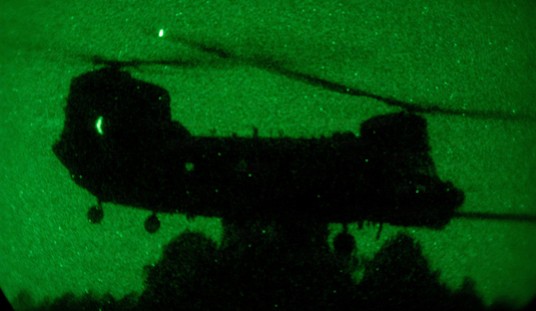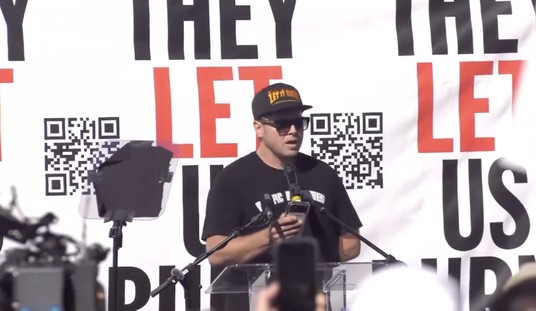So far this climbing season eleven people have died climbing Mount Everest, setting a grim record for the most in a single year.
The first to summit the mountain, Sir Edmund Hillary and his sherpa Tenzing Norgay, did in 1953, Since then, an estimated 4,000 people have climbed Everest. 308 people have died. A cleanup crew has recently uncovered four more bodies on the mountain, but it is, as yet, unknown when those people died.
Why is this year so much worse than it has been in the past? USA Today reports that the

In this May 22, 2019, file photo, a long queue of mountain climbers line a path on Mount Everest just below camp four, in Nepal. Seasoned mountaineers say the Nepal government’s failure to limit the number of climbers on Mount Everest has resulted in dangerous overcrowding and a greater number of deaths. (AP Photo/Rizza Alee, File)
Nepalese bad weather. This limits the number of days climbers can attempt to reach the . summit which caused a “traffic jam.” Spending time waiting in line to reach the top meant that people were spending far too long at high altitudes, and complications from altitude sickness was the cause of most of the deaths. We picture people dying as they struggle to climb to the top, but many die on their way back down as altitude sickness sickness and it’s complications take the climbers.
This guide argues that this year really isn’t worse than other years when one considers the radio of climbers to deaths. Unfortunately, that might be exactly the problem. The government is simply issuing too many climbing permits. I decided to speak with the only person I knew who had first-hand knowledge: my brother, Andrew.
In the fall of 2018, he went to Nepal and, along with a group (including guides), hiked to Base Camp Everest. The hike took 12 days- eight days up and four days down, so they

had plenty of time to chat with their guides. They talked about how the Nepalese government will issue a climbing permit to anyone willing to buy one, regardless of skill. Considering the fact that an inexpensive trip to climb Everest will cost around $25,000. Add in the cost of training and gear, and an average trip will cost more like $80,000, if you want to go luxury, you can easily top $100,000.
That is a lot of money being pumped into the Nepalese government, and they aren’t turning it down. Even if that means putting inexperienced climbers on Mount Everest. Climbers who rely entirely on their sherpa to carry everything and set all of the lines. Climbers who put all of the risk onto that sherpa.
Andrew’s group saw a few medical evacuations via helicopter. One was a woman who had climbed too fast and gone into a coma at 12,000 feet. Word traveled fast on the mountain that she didn’t have any insurance and didn’t want to spend the money on a helicopter, so nobody called for assistance until it got to this point.
The sherpa explained that, in recent years, some guides had gotten into a racket with the helicopter operators to get kickbacks for helicopter evacuations. Once that was exposed, it made legitimate guides hesitant to call for helicopter assistance when their climbers really needed it, because they didn’t want to ruin their reputation.
With this many people on the mountain, consider the ecological cost as well as the

Mount Everest. Photo: Andrew Hamilton. Used with permission.
human. There are no roads on Everest, no way to get garbage off the mountain. Everything you bring up with you has to come back down. Earlier this week, the Nepalese government collected more than 24,000 pounds of garbage from Everest, the AP reported. This was mostly food wrappers, cans, bottles, and oxygen cylinders. Andrew’s group was careful to use reusable bottles and bring everything down to be disposed of properly, but other groups burned their garbage, even plastic items.
It’s baffling that environmentalists haven’t come out against the number of climbers on Mount Everest. Erosion from climbing, garbage strewn everywhere, burning which releases toxins into the air. Isn’t this a trifecta for them? And then there’s the human element. They know they’re putting climbers and sherpas at risk by having no standards

Andrew Hamilton at Base Camp Everest. Photo: Andrew Hamilton. Used with permission.
when issuing a climbing license.
Maybe more people should consider hiking to base camp. It’s a difficult hike (Andrew compared the difficulty level to hiking Machu Picchu in Peru),of nearly two weeks at altitude. I don’t think anyone is going to make fun of you for not climbing to the top of the mountain. If they are, maybe they need new friends. Maybe they need new standards for how they validate themselves. I don’t know.
What I do know is that Nepal needs to reconsider how they run their government. I can understand the temptation to milk this revenue stream for every possible bit they can get, but this is quite literally a matter of life and death. Once again, big government is choosing the wrong side.

Andrew at Bae Camp Everest. Photo: Andrew Hamilton. Used with permission.














Join the conversation as a VIP Member